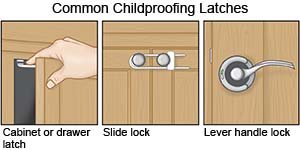Chemical Skin Burn
Medically reviewed by Drugs.com. Last updated on Aug 4, 2025.
What do I need to know about a chemical skin burn?
Examples of chemicals that can burn skin are found in cleaning products, paint stripper, and pesticides. Chemicals may also be found in some workplaces, such as wet or dry cement or battery acid. Signs and symptoms may not develop for several days. A burn may be worse than it appears at first. It may also get worse over the first few days.
What are the signs and symptoms of a chemical skin burn?
Signs and symptoms depend on the chemical, its amount and strength, and how long it was on your skin:
- Painful, burning, or numb area
- Skin that is irritated, red, or black
- Deformed skin
- Blisters or peeling skin
How is a chemical skin burn diagnosed and treated?
All clothing, jewelry, and foreign objects will be removed from the burn area. Your healthcare provider will examine your burn for swelling or other problems. Tell him or her about any pain or other symptoms you have. He or she will check how deep the burn goes, and how much tissue is affected. He or she will also check for signs or infection. Treatment depends on the chemical used and how severe the burn is. A severe burn, or a burn on your face, hands, or joints will be treated in the hospital. You may also need treatment at a burn center. You may need any of the following:
- Medicines may be given to prevent or treat pain, a bacterial infection, or itching.
- The burn may be cooled with water or moist gauze. This will help relieve pain and decrease swelling. This can also help to limit tissue damage caused by the burn.
- The burn may be cleaned with a cleanser or gauze. The area may be flushed for minutes to hours. This helps remove as much of the chemical as possible. Damaged tissue may also be removed. A graft may be used to cover the area where skin was removed. A graft can be artificial or made from donor skin. Skin may also be taken from another area of your body.
How do I care for the chemical skin burn at home?
- Early care of the burn area includes covering the burn with a bandage to keep it moist and clean. The bandage absorbs fluid that drains from the wound and helps prevent infection. Change your bandage as often as directed, and if it becomes soaked with fluid from the wound. You may need to change the bandage 2 times each day to start, and then 1 time each week after that.
- Later care of the burn area includes the following:
- Apply a moisturizer such as aloe vera cream to the burn area. This can help keep the skin moist and reduce itching. Loose, soft clothing can also help relieve itching.
- Do not expose your wound to direct sunlight. For at least 12 months, apply sunblock to your wound every time you go outside during the day. Use a sunblock with an SPF of 25 or higher.
- Follow instructions to help reduce scarring. Scars can limit your movement.
What can I do to prevent chemical skin burns?
- Store cleaning products out of the reach of children. Read the safety information on the labels of household cleaning products before you use them. Use child safety locks to keep children out of storage areas.

- Wear safety equipment when you use chemicals. Examples include gloves, protective clothing, and goggles. Read all labels before you use any chemical. Make sure you know how to use the chemicals correctly. Follow all safety rules in your workplace.
When should I seek immediate care?
- Your burn has more redness, pain, or swelling.
- Your burn oozes yellow liquid that smells bad.
- Your burned skin starts to tighten and restrict your movement.
- Your burned skin changes color or a new wound develops.
When should I call my doctor?
- You have a fever.
- You have less energy and feel ill.
- You have blisters that rupture.
- You have questions or concerns about your condition or care.
Care Agreement
You have the right to help plan your care. Learn about your health condition and how it may be treated. Discuss treatment options with your healthcare providers to decide what care you want to receive. You always have the right to refuse treatment. The above information is an educational aid only. It is not intended as medical advice for individual conditions or treatments. Talk to your doctor, nurse or pharmacist before following any medical regimen to see if it is safe and effective for you.© Copyright Merative 2025 Information is for End User's use only and may not be sold, redistributed or otherwise used for commercial purposes.
Further information
Always consult your healthcare provider to ensure the information displayed on this page applies to your personal circumstances.
